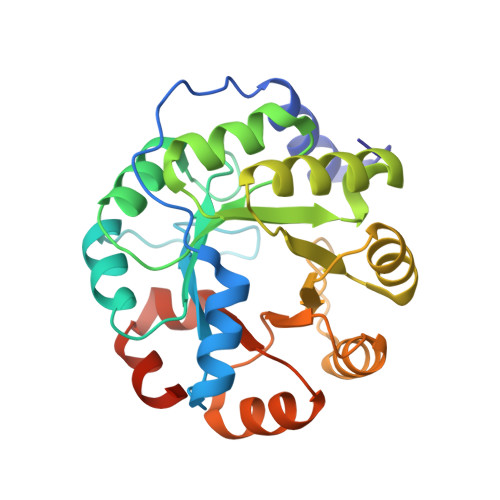De novo-designed enzymes as small-molecule-regulated fluorescence imaging tags and fluorescent reporters.
Liu, Y., Zhang, X., Tan, Y.L., Bhabha, G., Ekiert, D.C., Kipnis, Y., Bjelic, S., Baker, D., Kelly, J.W.(2014) J Am Chem Soc 136: 13102-13105
- PubMed: 25209927
- DOI: https://doi.org/10.1021/ja5056356
- Primary Citation of Related Structures:
4PEJ, 4PEK - PubMed Abstract:
Enzyme-based tags attached to a protein-of-interest (POI) that react with a small molecule, rendering the conjugate fluorescent, are very useful for studying the POI in living cells. These tags are typically based on endogenous enzymes, so protein engineering is required to ensure that the small-molecule probe does not react with the endogenous enzyme in the cell of interest. Here we demonstrate that de novo-designed enzymes can be used as tags to attach to POIs. The inherent bioorthogonality of the de novo-designed enzyme-small-molecule probe reaction circumvents the need for protein engineering, since these enzyme activities are not present in living organisms. Herein, we transform a family of de novo-designed retroaldolases into variable-molecular-weight tags exhibiting fluorescence imaging, reporter, and electrophoresis applications that are regulated by tailored, reactive small-molecule fluorophores.
- Department of Chemistry, Department of Molecular and Experimental Medicine, and The Skaggs Institute for Chemical Biology, The Scripps Research Institute , 10550 North Torrey Pines Road, La Jolla, California 92037, United States.
Organizational Affiliation:
















